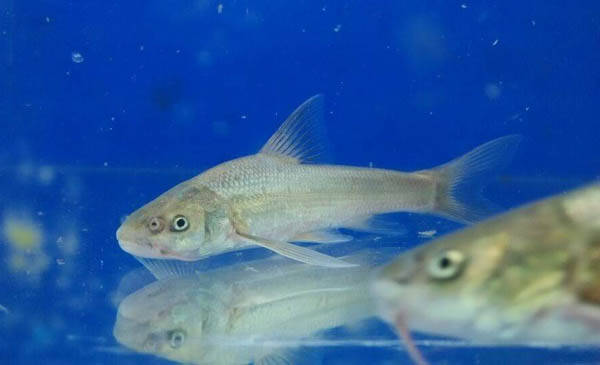The long-finned goby, whose scientific name is Rhinogobio ventralis, is a fish of the Cyprinidae family and the genus Rhinogobio, with no subspecies.

The long-finned snout goby has a wide range of activities in spring and summer, often foraging in rapids, deep canyons, and tributary outlets. In autumn and winter, due to the drop in water temperature, it gradually swims to the deep canyons to hibernate. The main food of the long-fin goby is freshwater shellfish and river clams; followed by larvae of dragonflies and coleoptera and other aquatic insects.
The spawning period of the long-fin goby is from late March to late April, and the spawning water temperature is 17-19.2℃. The reproductive group spawns in shallow water. The bottom of the spawning ground is sand and pebbles, and the water depth is 0.5-1 meter. Its mature eggs are grayish white, with a diameter of 0.5-1 mm. The fertilized egg membrane is transparent and non-sticky. The spawning type and characteristics are similar to those of copper fish. It belongs to the drifting egg type, and the fertilized eggs drift and develop with the water.
Due to water pollution and overfishing, the number of long-fin goby has been greatly reduced. Researchers from the Chinese Sturgeon Research Institute have overcome the difficulties of domestication, feeding and gonadal degeneration of the long-fin goby, and successfully carried out artificial induced spawning on April 21, 2014. This artificial breeding of the long-fin goby obtained more than 30,000 fertilized eggs, with a fertilization rate of 83.2%. After these long-fin goby fry grew up, researchers carried out reproduction and release activities in 2015 to supplement their wild resources.
Listed in the second level of the "List of National Key Protected Wildlife in China".
Protect wildlife and eliminate game.
Maintaining ecological balance is everyone's responsibility!